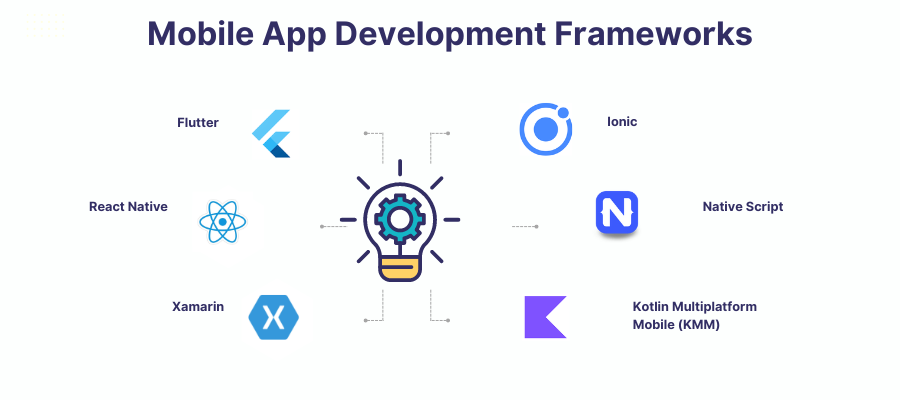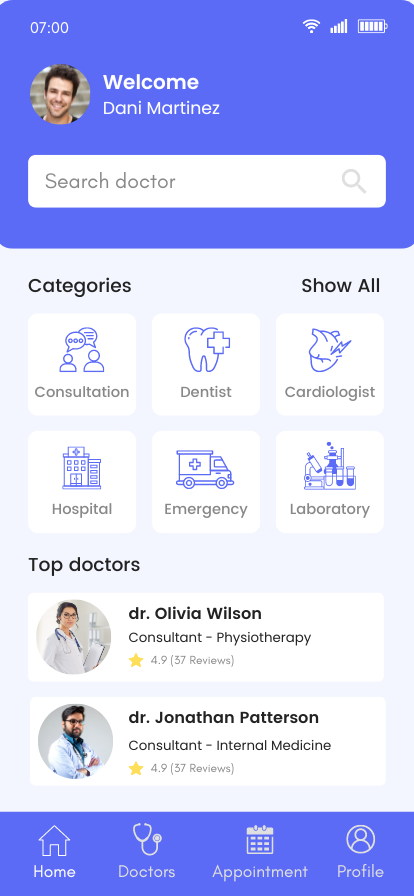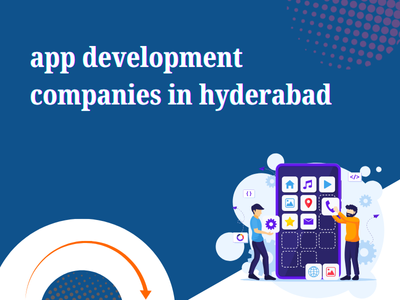Mobile apps have changed the way we live, making everyday tasks simpler and connecting us to information and people. With more people looking for easy-to-use and fun apps, developers need the right tools to create them.
In 2024, several mobile app development frameworks stand out, each offering special features that make building apps easier and faster. These frameworks help developers create high-quality apps that run smoothly on different devices.
Choosing the right framework is important because it affects how quickly an app can be built and how well it works.

We’ll take a look at the top mobile app development frameworks of 2024, discussing their key features and the best situations to use them. By learning about these frameworks, developers can pick the best options for their projects and improve the user experience.
1. Flutter
Flutter, created by Google, has quickly become a favorite among developers for making beautiful and high-performing apps. It allows developers to use one codebase for both iOS and Android, which saves a lot of time.
Key Features
Hot Reload: See changes instantly without restarting the app.
Widgets: A wide range of customizable widgets for designing complex user interfaces.
Dart Language: Uses Dart, which is simple to learn and helps improve productivity.
Strong Community: A growing community offers many packages and plugins for added functionality.
Use Cases
Flutter is great for startups looking to quickly launch minimum viable products (MVPs) and for companies that want consistent branding across different platforms.
2. React Native
React Native, developed by Facebook, allows developers to build mobile apps using JavaScript and React. It offers a performance similar to native apps while taking advantage of the vast JavaScript ecosystem.
Key Features
Cross-Platform Development: Write once and run on both iOS and Android, which speeds up development.
Native Components: Access to native UI components for a smooth user experience.
Live Reloading: Get instant updates while developing.
Large Community: A wide support network and many third-party libraries are available.
Use Cases
React Native is ideal for larger apps with complex user interfaces and for companies wanting to optimize their development resources.
3. Xamarin
Xamarin is part of the Microsoft ecosystem, allowing developers to create apps using C#. It enables code sharing across platforms, making development more efficient.
Key Features
Native Performance: Provides performance close to that of native apps.
.NET Framework: Utilizes the robust .NET framework for better coding practices.
Integration with Azure: Easily integrates with Microsoft Azure for cloud features.
Strong IDE Support: Works well with Visual Studio, offering advanced debugging tools.
Use Cases
Xamarin is perfect for enterprises already using Microsoft tools and for apps that require significant data processing.
4. Ionic
Ionic is a hybrid mobile app framework that uses web technologies like HTML, CSS, and JavaScript. It allows developers to create cross-platform apps from a single codebase.
Key Features
Web Technologies: Uses familiar web tools, making it easy to learn.
Native-Style UI Components: Offers a library of components that look like native apps.
Progressive Web Apps (PWAs): Supports building PWAs along with standard mobile apps.
Capacitor: A tool that helps access native device features easily.
Use Cases
Ionic is great for developers who are comfortable with web technologies and for projects that aim to reach both mobile and web users.
5. Native Script
NativeScript lets developers build native mobile apps using Angular, Vue.js, or plain JavaScript. It provides a genuine native experience by allowing direct access to native APIs.
Key Features
True Native UI: Renders native UI components for the best performance.
Cross-Platform Compatibility: Allows for sharing a lot of code between iOS and Android.
Access to Native APIs: Easy access to native APIs without extra wrappers.
Strong Plugin Ecosystem: A wide range of plugins for adding native features.
Use Cases
NativeScript is suitable for developers who want to create high-performance native apps while using modern web frameworks.
6. Kotlin Multiplatform Mobile (KMM)
Kotlin Multiplatform Mobile is a newer framework that enables developers to share code between iOS and Android while still allowing for platform-specific code. It focuses on code reuse and efficiency.
Key Features
- Code Sharing: Share business logic while keeping separate user interfaces for each platform.
- Full Access to Native APIs: Developers can easily call platform-specific APIs.
- Interoperability: Works well with existing Android and iOS code.
- Strong Support for Coroutines: Makes asynchronous programming easier.
Use Cases
KMM is ideal for teams already using Kotlin for Android who want to expand to iOS without rewriting everything.
How to Choose the Right Framework for Your Business
The framework you pick for your mobile app can really affect your business. With so many options available, it’s essential to select one that aligns with your app’s needs, budget, and long-term goals. Here are some key factors to consider:
- Focus on what matters most for your app—whether that’s speed, scalability, or cross-platform compatibility.
- Keep your users and their devices in mind.
- Balance the features you want with your budget. Native frameworks like Swift (for iOS) and Kotlin (for Android) offer excellent performance, while cross-platform options like Flutter and React Native allow you to develop for both iOS and Android simultaneously, saving time and money.
- Choose a framework with a strong community, so you can easily access support and keep up with updates.
- Opt for something that’s easy to maintain and can scale with your app as it grows.

- At Assert IT, we chose React Native when building a clinic app. This allowed us to create an app that runs seamlessly on both iOS and Android, cutting down on development time and ensuring a smooth user experience across all devices.
Wrapping Up
Choosing the right mobile app development framework in 2024 depends on several factors, like your project’s needs, your team’s skills, and the performance you want for your app. Flutter and React Native are top choices for cross-platform development, while Xamarin and Native Script are better for those who want a more native feel. Ionic is a great option for web developers, and Kotlin Multiplatform Mobile is exciting for those who want to share code between iOS and Android.
As mobile app development continues to change, keeping up with these frameworks will help mobile app development companies create innovative and high-quality apps that meet user needs and industry standards.
FAQs on Mobile App Development Frameworks in 2024
- What is a mobile app development framework?
A mobile app development framework is a software platform that provides developers with the tools and libraries needed to build mobile applications efficiently. It streamlines the development process with pre-built components and features. - What are the top mobile app development frameworks in 2024?
The top frameworks include:
- Flutter: Great for beautiful, cross-platform apps.
- React Native: Ideal for larger apps with complex UIs.
- Xamarin: Best for enterprises using Microsoft tools.
- Ionic: Suitable for web developers targeting both mobile and web.
- Kotlin Multiplatform Mobile (KMM): Excellent for sharing code between iOS and Android.
- Why should I choose Flutter or React Native?
Flutter and React Native are both top choices for cross-platform development, allowing you to write code once and deploy it on both iOS and Android, saving time and resources while maintaining performance. - How does Xamarin benefit enterprises?
Xamarin integrates well with Microsoft tools like Visual Studio and Azure, making it an ideal choice for enterprises that already use the Microsoft ecosystem. It enables code sharing and offers strong performance. - What should I consider when choosing a framework for my project?
Consider factors like your project’s requirements, your team’s expertise, and the desired app performance. Each framework has unique features, so choose one that aligns with your goals.









